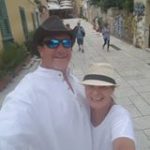Early settlers and pre-Inca cultures
We know that the history of Peru began when the first settlers arrived in Peru 20,000 years ago. It is thought that they arrived from the north via the isthmus of Panama in search of new lands. They were hunter-gatherers, as shown by the cave art at Toquepala (Tacna, 7600 BC).
As agriculture developed, the first settlements and cultures began to appear. Latest research concludes that the first civilization in Peru began with the Caral, considered to be the most ancient in the Americas, dating back some 5,000 years, when urban development in the rest of the Americas is thought to have begun 1,550 years later. Its discovery has changed previous thinking on how Peru’s ancient civilizations emerged. Until recently, Chavín de Huántar was considered to be one of the oldest cultural focal points, dating back to a maximum of 1500 BC.
After Caral, Andean culture expanded into the different areas of Peru, and produced civilizations that have left a wealth of archaeological and intangible heritage. Each pre-Inca culture had its own level of development, but with common aspects in terms of agriculture, food, clothing, social organization and even art. This characteristic of pre-Inca towns can be explained as they all formed part of a long and extensive cultural process, which began in Caral and continued with the Inca Empire.
The Incas
The Inca Empire (1200 – 1500 AD) was the most important civilization in South America. Settled in the high and middle zones of the Vilcanota River valley, the empire represented the culmination of an ancient process of cultural development that began over 5,000 years ago. It is considered to have been a state, as it reached high levels of political organization and had a regulated system for wealth distribution, as well as excellent architectural and agricultural development.
Also known as Tahuantinsuyo, its origin and capital was Cuzco. It flourished in the Andean region and its domain stretched all the way to present-day Colombia, Chile and Argentina, including the entire Bolivian and Ecuadorian territories.
The Inca population principally worshipped the Earth (Pachamama) and the Sun (Inti). They believed that their head of state, the Inca King, had divine origins and was the child of the Sun.
The Incas were the masters of their own geographical domain and implemented stone-based construction techniques in their large citadels, in harmony with the landscapes that surrounded them. Examples of this are Machu Picchu, Choquequirao and Sacsayhuamán, among others.
Inca society had no written language, for which reason there are no exact records nor dates of its people, events or experiences. The study of Inca archaeology, work, drawings, art and the interpretation of historians are the principal source of information on the empire’s history.
Meeting of Two Worlds
Inca and European cultures clashed when the Spanish conquistadors arrived in the 16th century. In 1532, Francisco Pizarro’s troops captured the Inca King Atahualpa in Cajamarca, an event that marked the decline of the Inca Empire.
In 1542, the Viceroyalty of Peru was formed, a dependency of the Spanish crown. The Viceroyalty’s territory included a large part of South America and existed for almost 200 years under the diverse forms of authoritative control. The Viceroyalty was consolidated in the 16th century by Viceroy Francisco de Toledo, who established the basis of the colonial economy: mita, a system of controlling the indigenous work force for mining and handicraft production.
The mining of riches had a negative impact on the colonized Peruvian Indians, who saw their rights being restricted and their culture repressed. The reforms of the 18th century generated much discontent among many social sectors and successive rebellions flared up. The most serious indigenous uprising was led by Túpac Amaru II, who sparked the criollo movements that would eventually lead the push for independence throughout Spanish America.
Birth of the Peruvian State
In 1821, Peru was declared an independent country by José de San Martín, and in 1824 Simón Bolívar culminated the freedom process with the independence wars. As a nascent republic, during its first years Peru had to face economic crises and military governments which made it difficult to consolidate a new national spirit between the indigenous and mixed-race peoples.
In economic terms, there was a boom in guano, cotton and sugar production. Slavery was ended midway through the 19th century, although at the same time, the first waves of Chinese immigrants arrived to work in agriculture, which was followed by Manuel Pardo’s first civilian governments. At that time, the guano boom had come to an end and the national economy entered into crisis, as guano had been providing the country’s main income.
In 1879, Peru was defeated in a war with Chile. Racked by bankruptcy, this saw a new era of military governments, followed by a return to civilian rule. A period began which is known as the «Aristocratic Republic» based on an economy dominated by the land-owning elite. At this time, rubber production in the jungle reached its peak and an even wider gap opened between the capitalist elite, and the rest of the population, who mainly lived off the land.
Modern Peru
During the 1970s, Peru was governed by a military dictatorship led by General Juan Velasco. The military administration nationalized oil and the media and reformed agrarian bases, radically changing ownership of agricultural lands.
Democratic governments returned in the 1980s, but the country sank into a severe economic crisis with extremely high levels of hyperinflation. At the same time, two terrorist movements emerged that brought violence to the country for twenty years.
In the 1990s, Alberto Fujimori, after a self-inflicted coup in 1992, dictated a series of laws that brought these terrorist groups to an end, leading the country to be reincorporated into the global economic system, from which it had withdrawn in the 1980s due to its decision to not pay its foreign debt.
As of 2000, Peru has had consecutive, clearly democratic governments, led by Alejandro Toledo, Alan García, Ollanta Humala and currently Pedro Pablo Kuczynsky (2016-2021). The country is currently enjoying high economic growth, reaching levels of growth never seen before, and overcoming the crisis of past decades.









